“Organic Beauty Recipes By Eve – The Complete Guide To DIY Natural Beauty” is my long-awaited book, with a treasure trove of effective and easy to follow recipes with 100% natural ingredients.
You can order the ebook now on amazon for only $4.99 or get the paperback edition for $19.99 (USD).
I also launched my own small business offering all-natural raw shea Butter! Every time you purchase my Shea butter, you are supporting the Ghana women coop which employs 95 women and buys shea nuts from more than 5,000 women in 44 communities.
Lastly, check out my favorite shopping lists on Amazon . I will receive a small commission from the affiliate program Amazon if you order something and this is at no additional cost to you.
Thank you for your support!
Improve your under-eye skin area with this DIY eye cream I made using only 3 simple ingredients, shea butter, evening primrose oil, and the star of the recipe, Blue Matcha. Blue matcha or also called butterfly pea flower has plenty of skin benefits (antioxidant, collagen booster, and astringent to name a few!) and will give a beautiful lavender-blue tint to your homemade eye cream. If those annoying dark circles, under-eye puffiness, and wrinkles have plagued you for long enough– it’s time to fight back. You could also use this cream on your entire face area…yes, it’s that good!
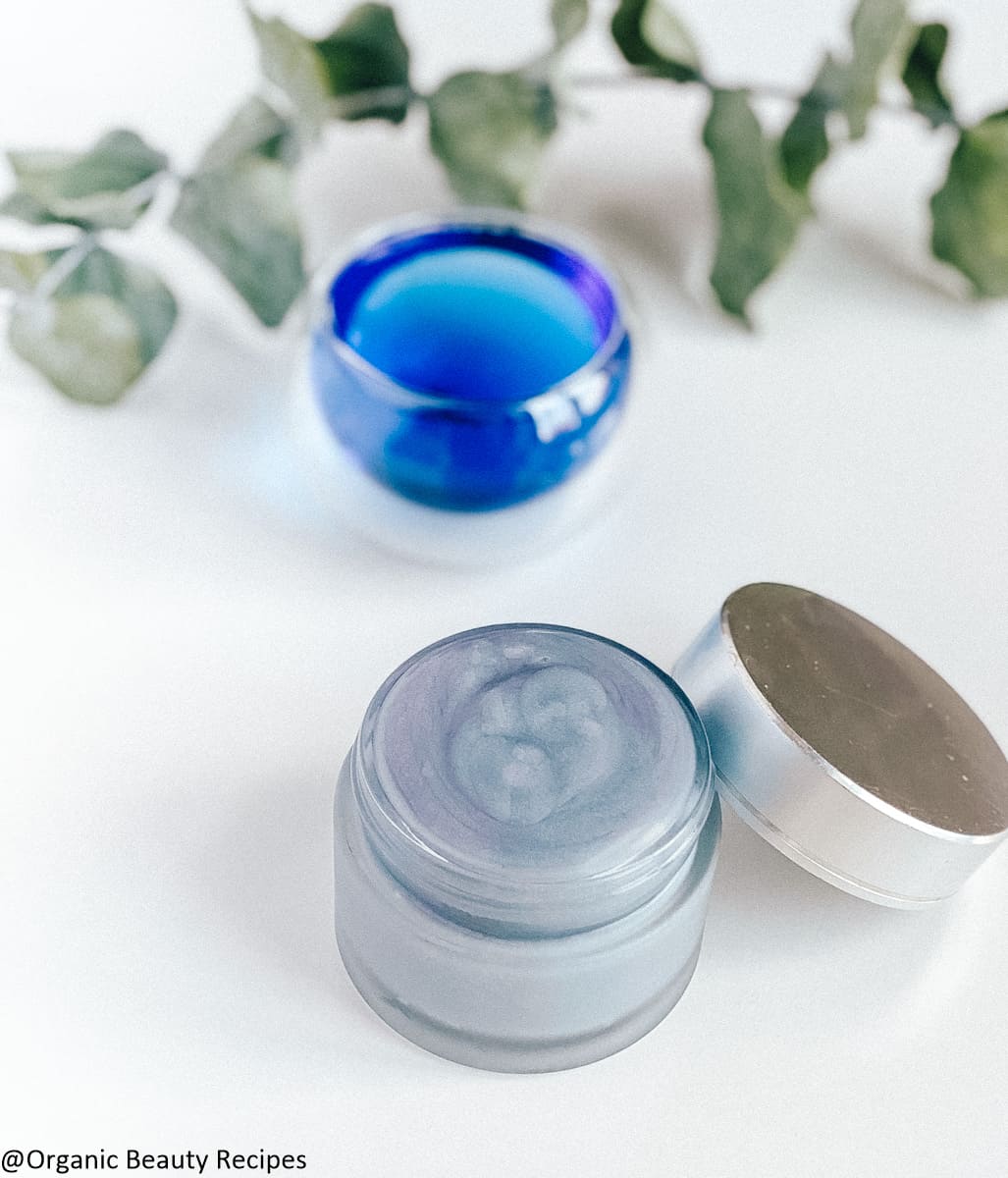
-
DIY eye cream key ingredients
- Shea butterPacked with a nourishing dose of vitamin A and E, shea butter is a common ingredient in eye creams because of its ability to combat the appearance of wrinkles and puffiness by stimulating collagen production. This helps increase skin firmness, thereby reducing the appearance of wrinkles in your under-eye area.
- Evening Primrose Oil
The rich, hydrating goodness of evening primrose oil contains an effective blend of essential fatty acids and soothing botanicals that soothe the skin around your eyes while improving skin elasticity and reversing previous damage to the area as well. - Butterfly pea flower powder/blue matcha
Extracted from a vining flower native to Thailand and Burma, Blue Matcha boasts a myriad of skin benefits that we’ll dive into below.
If you’ve never tried this butterfly pea flower tea, you are missing out! I love the sweet floral and earthy taste and that it is caffeine and theine-free. In case you did not know blue matcha has nothing to do with matcha, but it is a catchy name and we can forgive it for its great health benefits. - Optional–a blend of essential oils (lavender, chamomile, carrot seed, and rose geranium)
You can take your DIY eye cream for dark circles to the next level using a blend of these therapeutic essential oils with amazing skincare benefits.
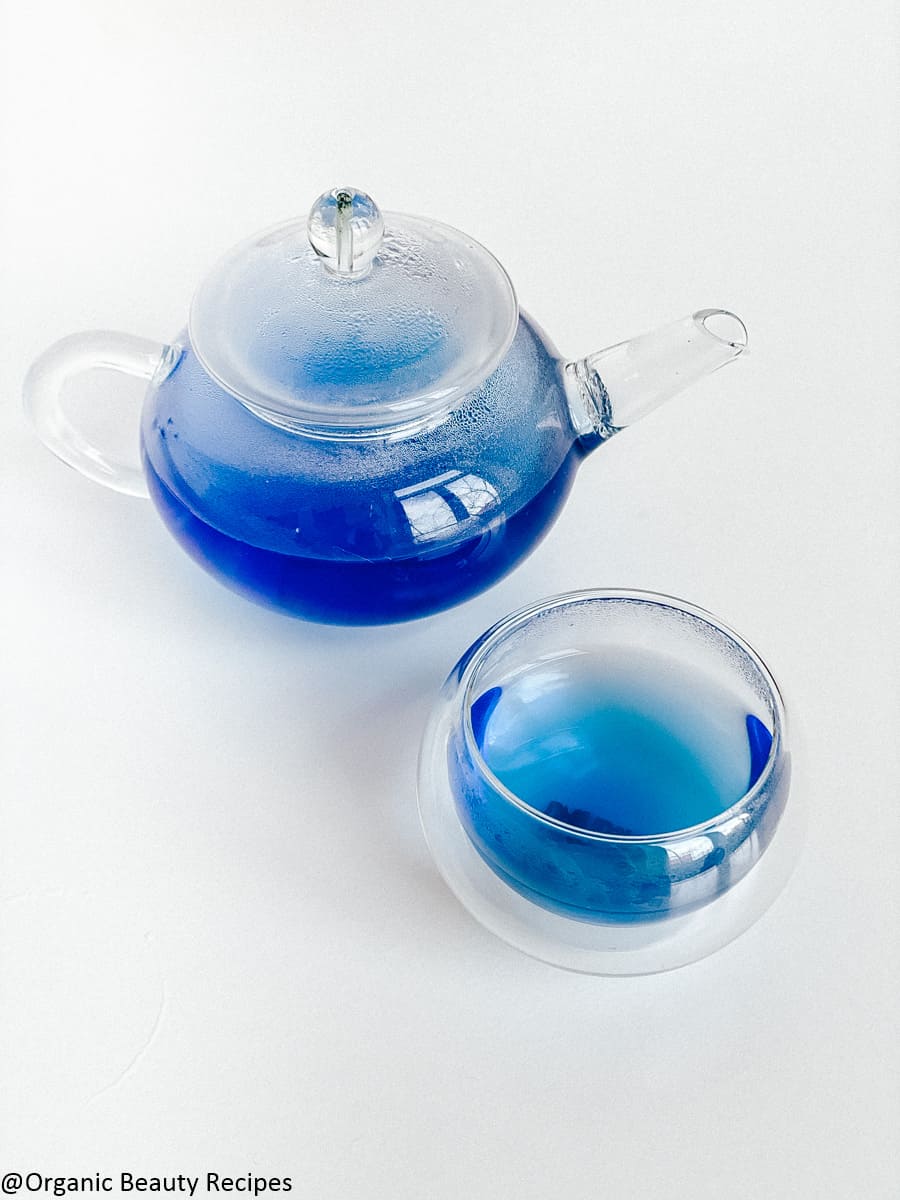
What are the benefits of Blue Matcha on the skin?
Blue matcha, or Butterfly pea extract as it’s more commonly called, contains a high concentration of naturally occurring polyphenols (Proanthocyanidin or condensed Tannis) and flavonoids. The former helps boost the body’s natural production of collagen and elastin while the latter works to clear up any pesky inflammation or redness.
But that’s not all. Add to the above mix potent anti-glycation properties and you’ve got yourself a winner. Caused by excess sugar and environmental factors like oxidative stress, pollution, and UV radiation, Glycation is that dreaded process that occurs when sugar molecules attach themselves to other molecules like collagen and elastin, resulting in loss of elasticity, uneven skin tone, and aging.
Moreover, recent studies have shown blue matcha to help with itching, allergies, and irritation to the skin as well, thanks to its strong free-radical scavenging and anti-inflammatory ability.
Butterfly Pea can be used for all skin types as a/an:
- Antioxidant
- Collagen and Elastin booster
- Anti-inflammatory
- Skin-soothing
- Astringent

Ingredients
- 20 teaspoons evening organic primrose oil
- 6 teaspoons organic shea butter
- 1/8 teaspoon blue matcha
- 7 drops lavender essential oil optional
- 7 drops chamomile essential oil optional
- 3 drops carrot seed essential oil optional
- 3 drops Rose Geranium Essential Oil optional
Instructions
- Add the shea butter and primrose oil in a deep and narrow bowl.
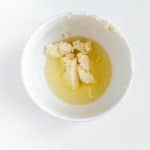
- Start mixing with a hand immersion mixer to make the DIY eye cream. Continue mixing until smooth and there are no lumps.
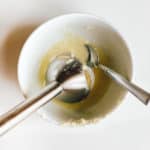
- Add the blue matcha powder, mix well.
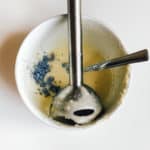
- Add the essential oils if you would like and mix for a few seconds. This is optional.
- Pour in a glass jar container.
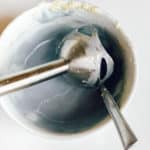
- Appy at night on the under eye area, before going to bed like a cold cream and in the morning.
Why you should avoid commercial eye cream?
While you may be tempted to choose the easier path and go for a ready-made solution and store-bought eye cream, please don’t. I don’t know about you but the idea of splurging on an overpriced tiny jar of product that’s bound to run out after a few uses just don’t sit well with me.
Not only that, but they also contain chemicals that can end up doing more harm than good. Examples of some commonly found ingredients in anti-aging eye creams that you should be avoided include:
Dimethicone: A suspected environment toxin, dimethicone is an antifoaming and skin conditioning agent. While limited usage is classified as safe, exposure to it for long periods can lead to moderate levels of non-reproductive organ system toxicity.
PHENOXYETHANOL: A commonly used preservative in cosmetics and skincare products, Phenoxyethanol is classified as an irritant, linked to allergies such as dermatitis. Long-term exposure can also have adverse effects on the central and peripheral nervous systems.
BHT: Reported to cause liver cancer in animals, this substance is classified as a tumor promoter. Also classified as expected to be toxic and harmful, it’s been shown to cause allergies and upper respiratory tract irritation in humans.
Fragrance: As anyone who’s remotely interested in skincare will be able to tell you, steer clear of products with fragrances. Because companies aren’t obligated to tell you the exact composition of their fragrances (since they’re considered “trade secrets”). Composed of fragrance dispersants such as diethyl phthalate, products with fragrances can cause allergies, dermatitis, respiratory distress, and potential effects on the reproductive system.
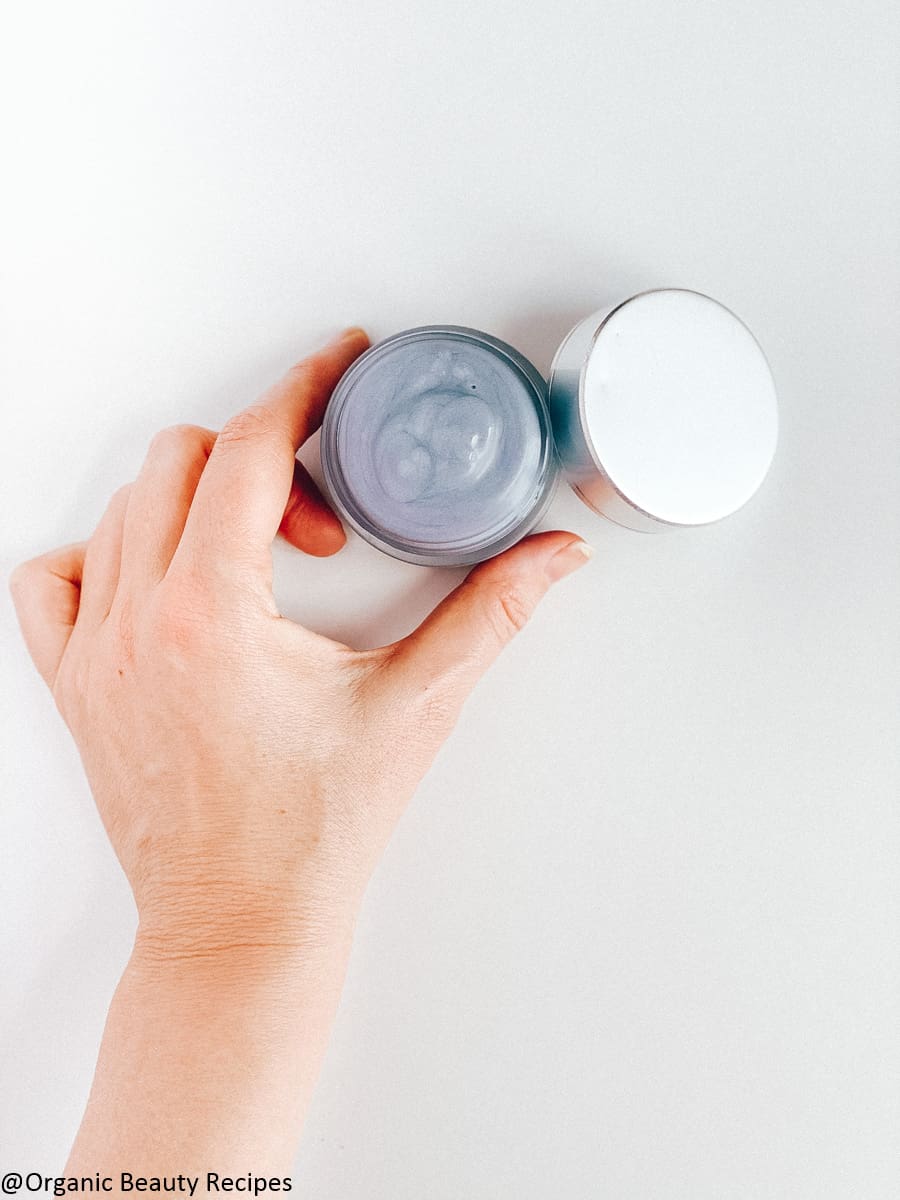
What is the best homemade eye cream?
As with any DIY skincare recipe, the best homemade eye cream is one that’s been made using only high quality, organic ingredients (certified with USDA or Ecocert labels) and of course, lots of love and care!
Can you make your own eye cream without preservatives?
Of course, all you have to do is to avoid using water, hydrosol, or aloe vera as it would spoil the cream if you don’t use preservatives. Stick to carrier oil and butter only and your DIY eye cream for wrinkles is good to last for up to a year!
What ingredients make a good eye cream?
While ideally, I would go for Shea butter and evening primrose oil for my homemade anti-wrinkle eye cream, you can also use other substitutes for these ingredients. For shea butter, you could use either of the following:
- Cocoa butter
Rich in fatty acids, cocoa butter does an amazing job at hydrating and nourishing your skin, thereby improving elasticity. - Kokum butter
Also rich in essential fatty acids, Kokum butter helps heal and soften skin, improving the firmness of skin. - Ucuuba butter
Highly moisturizing, Uccuba butter is known to have anti-inflammatory and antiseptic properties that make it an ideal ingredient in skincare products.
To replace the evening primrose oil, you can substitute
- Borage oil
Lighter than most other oils, Borage oil works to drive away all sorts of skin inflammation and has a calming effect as well. - Camelia seed oil
An excellent emollient, camellia seed oil is nongreasy and helps improve skin texture while slowing down signs of aging skin. - Kukui oil
Rich in antioxidants, Kukui Oil helps stimulate collagen production and leaves skin feeling soothed and softened.
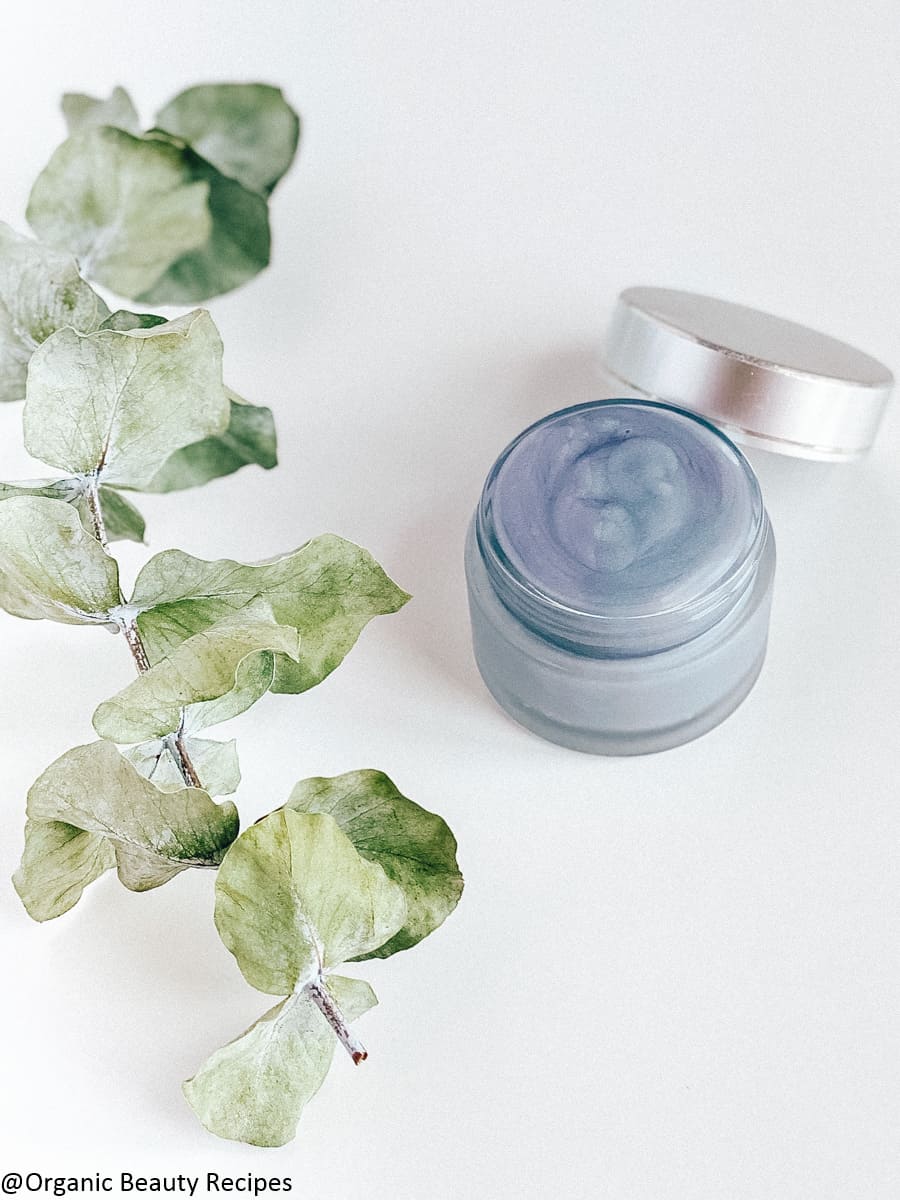
Why is eye cream so expensive?
Packaged in minuscule 0.5 oz jars, eye creams can cost anywhere up to $100. Why the hefty price tag, you might wonder. Well, the simple answer is that it’s nothing more than a scam by a commercial beauty firm to make more profit.
While the beauty industry tries its best to convince you that you can’t live without their ridiculously overpriced jars of magic potions, now you know better.
Should you use coconut oil in your DIY eye cream?
I’d recommend against this as coconut oil is comedogenic (meaning that it can block your pores). It also feels really heavy and greasy on the skin and nobody wants that.
Can I put vitamin E under my eyes?
Yes! Vitamin E helps combat the effect of the free radicals responsible for those pesky wrinkles in your under-eye area. Simply massage a few drops of it into your under eyes at night and leave overnight and you’ll be on your way to achieving younger, firmer skin.
Can I put vaseline under my eyes?
I wouldn’t recommend using Vaseline as it is made of petroleum and is highly water repellent. As such, it can stop moisture from being absorbed in the eye area.
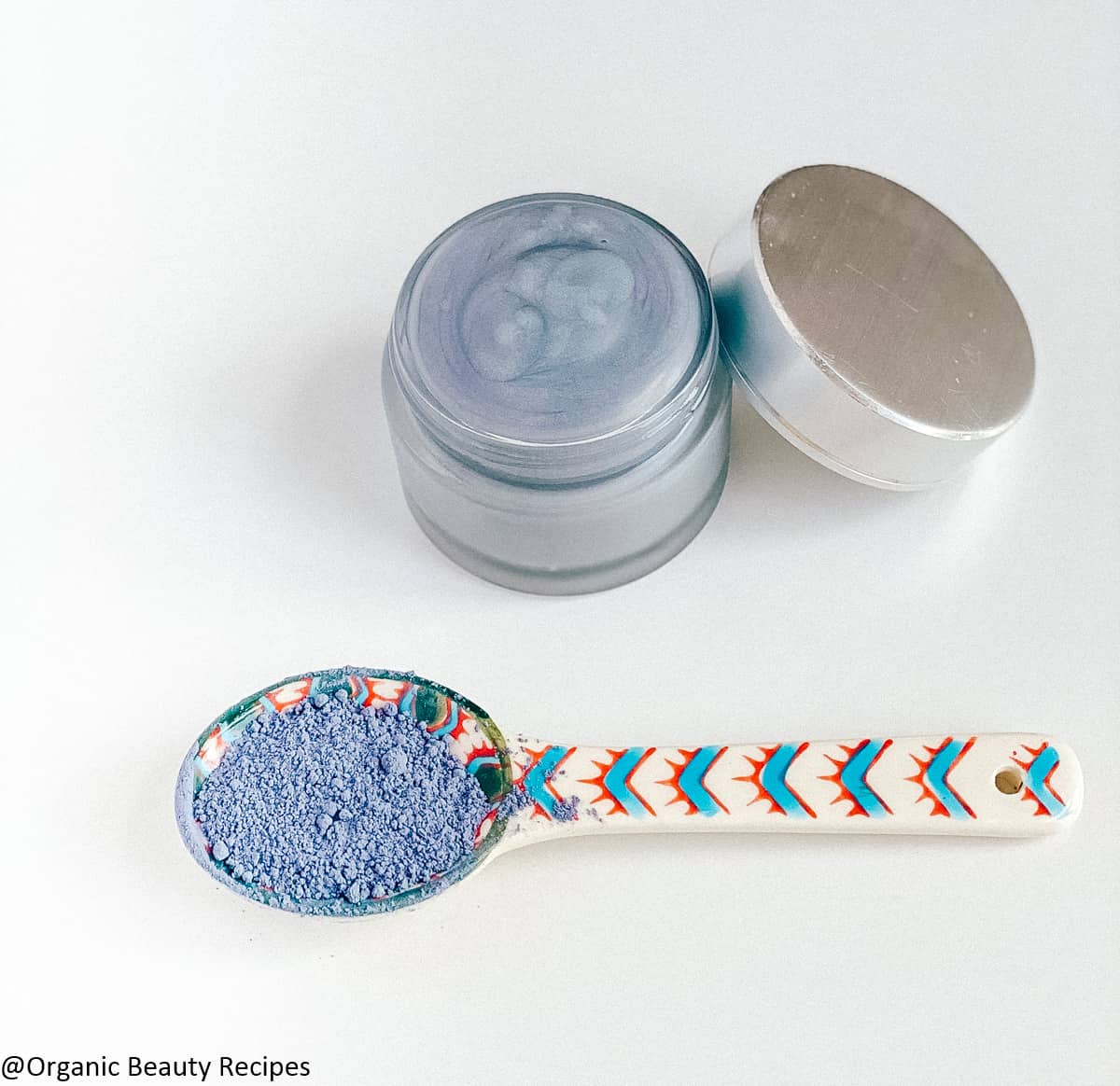
Can I put coconut oil under my eyes?
I would avoid coconut oil on the face as it is comedogenic.
What causes puffy eyes?
Puffy or baggy eyes can be caused by a variety of reasons— lack of sleep, poor diet, seasonal allergies, and unfortunately, aging.
What causes dark eyes?
As opposed to common belief, dark circles aren’t only due to tiredness and a lack of sleep. There could be a host of other reasons at play. Like allergies, smoking, thyroid conditions, anemia, overexposure to light, dehydration, or simply inherited genes.
If you are looking for a DIY eye cream with caffeine, then head over to my homemade eye cream recipe with shea butter, evening primrose oil, chamomile hydrosol, beeswax, and green tea leaf extract. You can replace the green tea leaf extract with coffee Arabica.
Other Anti-Aging Natural DIY Beauty Recipes
This one’s a forever personal favorite. Pamper yourself with this luxurious anti-aging face cream, made with only shea butter, jojoba oil, evening primrose oil, and argan oil (plus a blend of essential oils).
Extremely simple to make, I used Uccuba butter, argan oil, shea butter, and camellia seed oil for this vegan-friendly take on my previous anti- aging cream.
Not in the mood to make an effort? Then this diy face serum recipe one’s for you! Simply pour rosehip oil and some essential oils together, shake and you’re done!
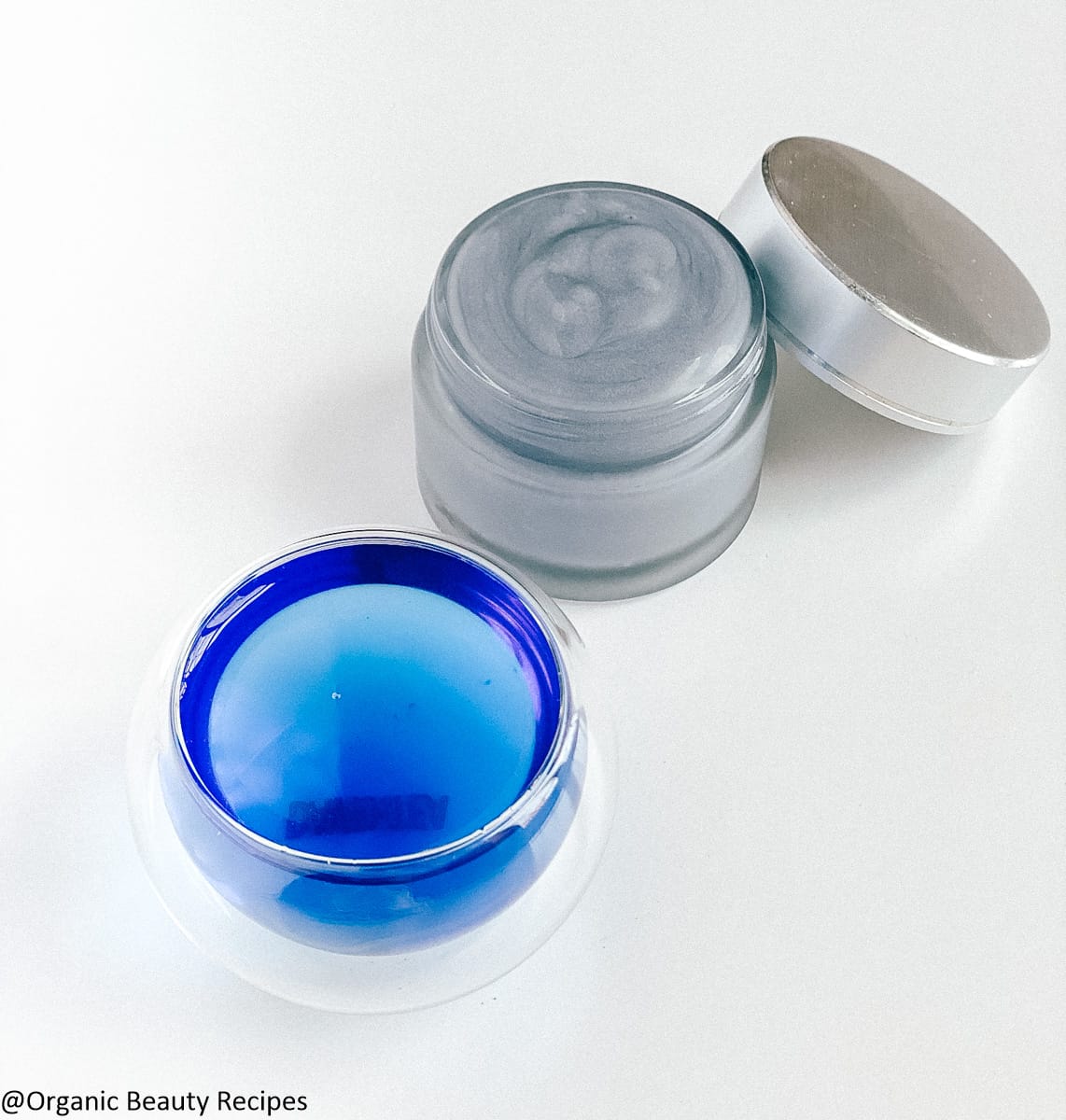
I hope you have enjoyed my recipe, please share the love and rate ***** in the comments below!

It’s really simpe to make, thanks.
what is shelf life for the product.. pls mention in all recipes..
I tried this recipe and found that it didn’t turn into a cream, but stayed a liquid. I was wondering if you might have any idea why this happened? I hope there’s some answer because this recipe appeals to me.
Author
That’s strange! Did you use an immersion blender and did not melt the shea butter?
As long as it is not 40C in your room and the shea butter is NOT melted then it should work just fine to turn into a cream.
If all fails, then add more shea butter and it will turn into cream.
Yes, I used an immersion blender and did not melt the shea butter. I will try adding more, or else possibly the shea butter has gone bad, in which case I will get a fresh supply. Thank you.
I can’t believe the recipe calls for 20 teaspoons (3.33 oz) of evening organic primrose oil? Really?? Also, I find by using Shea butter that it is greasy. Does not absorb in the skin. Will not be able to use in the daytime.
Author
Yes its 20 teaspoons, it allows the cream to stay soft so it can be applied easily. a little goes a long way.
Hi I was wondering if 20 teaspoons of evening primrose is correct, I would love to make this I really love your book and I have made a few of them , I wanted to confirm with you if 20 was the correct amount to use?
Author
hi teri, Yes its 20 teaspoons, it allows the cream to stay soft so it can be applied easily. thanks for getting my book and glad you are enjoying it!